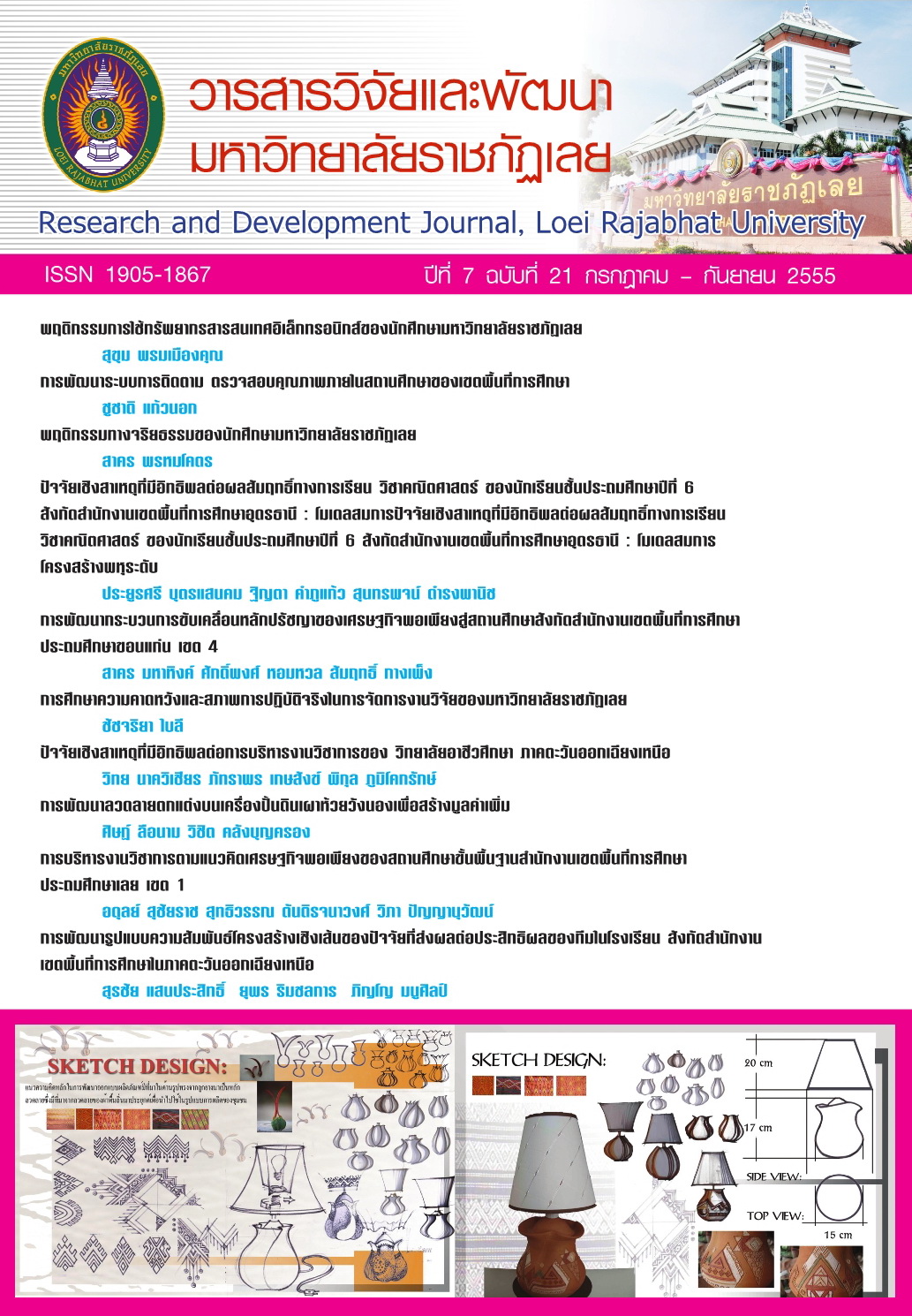การพัฒนารูปแบบความสัมพันธ์โครงสร้างเชิงเส้นของปัจจัยที่ส่งผลต่อประสิทธิผลของทีมในโรงเรียน สังกัดสำนักงานเขตพื้นที่การศึกษา ในภาคตะวันออกเฉียงเหนือ
Keywords:
the development of structural equation model, the team effectiveness in schoolsAbstract
This research aimed to study the team effectiveness in schools under the Educational Service Area Offices in the Northeast of Thailand which the purposes of this research were : 1) to develop the linear structural equation model of the factors affecting the team effectiveness in the schools, and examine the goodness of fit between the models of factors affecting the team effectiveness which developed and the empirical data, and 2) to find out the direct, indirect and total effects of the factors affecting the team effectiveness. The multi-stage random sampling was applied for research sample which comprised 550 schools. The data were employed by using a questionnaire which earned data were analyzed to obtain mean (), standard deviations (S.D.) and Pearson’s product moment correlation coefficient. LISREL 8.30, was used for the confirmatory factor analysis and tested the goodness of fit between the hypothesis model and the empirical data.
The research results found that :
1. The linear structural equation model of the factors affecting the team effectiveness in the schools which developed by the researcher was fitted with the empirical data. The statistic values of the final model were as follows : = 27.36, df = 49, p-value = 0.99, AGFI = 0.98, RMSER = 0.00, RMR = 0.0077, CN = 1480.76 and the largest standardized residual = 1.98
2. The factors which were direct, indirect and total effects on the team effectiveness which ordered from high to low of the influence coefficients as follows.
2.1 The direct effect had three factors : team designing with the influence coefficient of 0.57, influence coefficient of 0.31 for the team process and team leadership with the influence coefficient of 0.06.
2.2 For direct effect, there were three factors : organizational context with the influence coefficient of 0.59, team designing with the influence coefficient of 0.35 and team leadership with the influence coefficient of 0.23
2.3 There were four factors in the total effect : team designing with the influence coefficient of 0.92, organizational context with the influence coefficient of 0.59, team process with the influence coefficient of 0.31 and team leadership with the influence coefficient of 0.29.
Downloads
Published
How to Cite
Issue
Section
License
ข้อความที่ปรากฎในวารสารฉบับนี้เป็นความคิดเห็นของผู้เขียนแต่ละท่าน สถาบันวิจัยและพัฒนา มหาวิทยาลัยราชภัฏเลย และกองบรรณาธิการ ไม่จำเป็นต้องเห็นด้วยและไม่มีส่วนรับผิดชอบใดๆ
สถาบันวิจัยและพัฒนา มหาวิทยาลัยราชภัฏเลย ขอให้ผู้อ่านอ้างอิงในกรณีที่ท่านคัดลอกเนื้อหาบทความในวารสารฉบับนี้






